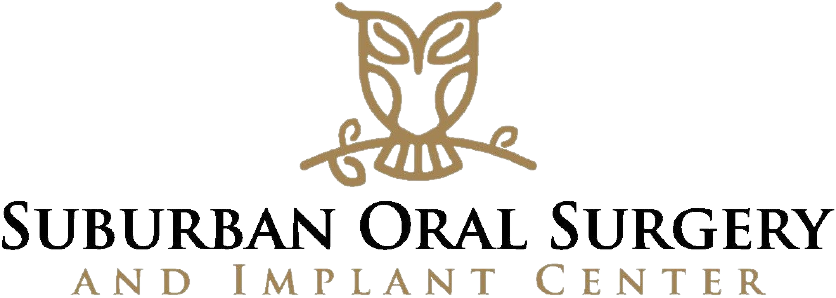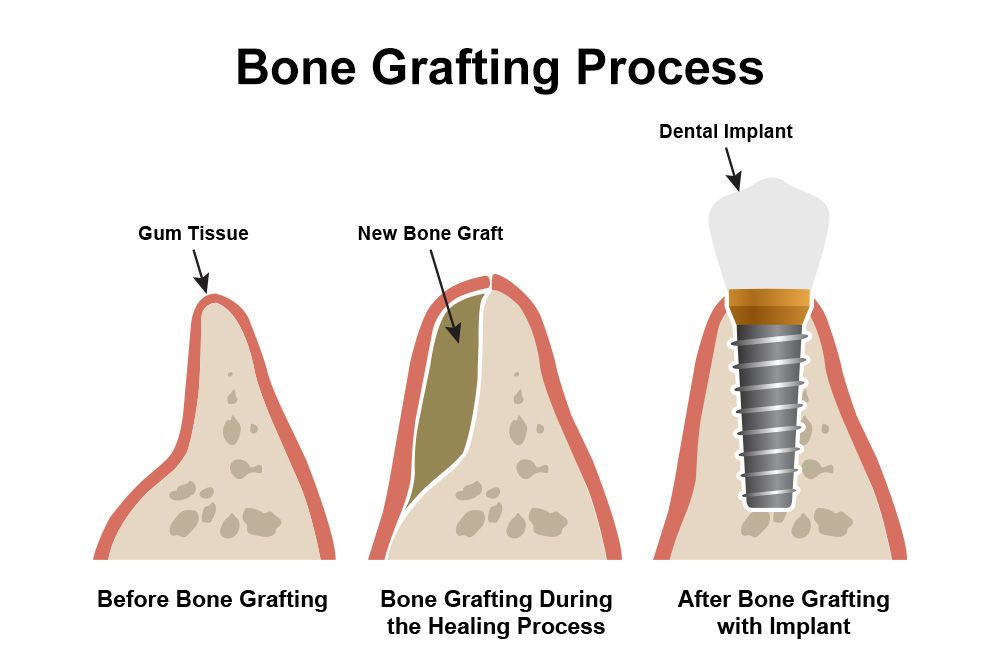Dr. Allan Libunao and Dr. Richard Kim are skilled oral surgeons and dental health specialists who are proud to serve the Bolingbrook area. Offering safe, effective, state-of-the-art oral surgery, our practice has helped countless patients smile with confidence again.
Many patients who come to the practice are interested in getting dental implants. When these patients lack sufficient bone density in their jaw to support an implant, bone grafting may be recommended.
ABOUT BONE GRAFTING
Bone grafting is a surgical procedure that builds up the density of the jawbone using donor bone fused to the existing hard tissue. When performed by oral surgeons for dental care matters, bone grafting is an excellent solution for treating bone loss of the jaw.
Many patients who would like to get dental implants but lack proper density of the jawbone will undergo bone grafting so they are able to proceed with the implant dentistry process. (Bone loss is a common side effect of tooth loss, particularly when a tooth has been missing for years.)
IDEAL CANDIDATES FOR BONE GRAFTING
Good candidates for bone grafting are people who suffer from a lack of density in the upper or lower jaw to support dental implants. They should be in good overall health and not suffer from any kind of medical condition that would make an oral surgery procedure a potential risk.
It’s important that patients understand the risks and the benefits of the surgery so they have realistic expectations about the procedure, and they should also understand that undergoing bone grafting will add several months to the overall implant dentistry treatment process.
BONE GRAFT OPTIONS: AUTOLOGOUS, ALLOGRAFT, SYNTHETIC
There are three options for bone grafts. They are as follows:
- Autologous – These are bone grafts that are harvested from another part of a patient’s body. Typically this means the patient’s chin or, sometimes, the patient’s hipbone.
- Allograft – These are bone grafts that come from cadavers, typically from bone banks.
- Synthetic – These kinds of bone grafts are artificial, typically made from materials that are similar to natural bone and biocompatible so that they fuse properly.
During the consultation process, we will go over which kind of graft might be most ideal for you as well as the advantages and disadvantages of each graft type.
THE ORAL SURGERY
During the actual oral surgery, local anesthetic is used in the area being operated upon. The oral surgeon makes an incision along the gumline to expose the underlying bone structure. The bone graft (whether autologous, allograft, or synthetic) is carefully positioned and anchored in place with titanium screws. A special membrane is placed over the operated area and the incision is sutured shut.
RECOVERY FROM BONE GRAFTING
In the first weeks after bone grafting, patients will be instructed to eat predominantly soft foods and to avoid placing any pressure on the treated area as it heals. Special post-op instructions will be provided to prevent infection and other complications following the oral surgery.
HOW LONG WILL HEALING TAKE?
Healing from bone graft surgery can take anywhere from six months to nine months. At that point, the bone graft will have fused with the existing bone structure, improving density of the jaw and overall wellness.
Only after healing is complete can the implant dentistry process continue. Keep in mind that this may double the overall treatment time for getting dental implants placed.
CONTACT SUBURBAN ORAL SURGERY AND IMPLANT CENTER
For more information about bone grafting and how it can help you receive dental implants and achieve dental wellness, be sure to contact our advanced oral surgery center today. Dr. Allan Libunao and Dr. Richard Kim look forward to meeting you in person and discussing your dental wellness in greater detail.

